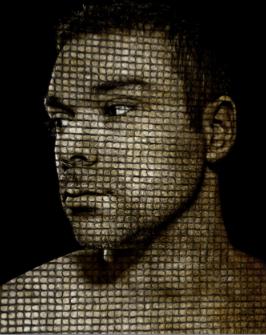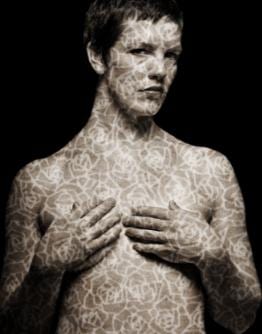
Credit: Jeremy Schruder
Montreal photographer Jeremy Schruder is entirely blunt about his main source of inspiration.
“That comes from the people who are not scared to live the life they want,” he says. “Fuck what others think, or what mould society feels they should fit. People who take risks — they might fail or succeed, but they take them.”
Schruder’s latest photos present their own unusual formal risks. He has adopted the Japanese art of washi papermaking.
Washi is intricately woven, fibrous paper, made through a laborious weaving process. Though it is Japanese, its production stems from traditional Chinese papermaking practices. It’s the paper of choice for many Japanese artists.
Schruder blends the paper’s colour and texture into his images, giving his work a lush, intricate sense of otherworldliness.
“My interest in washi paper stems from several visits to Japan over the last few years and an admiration of the paper’s textures and many uses,” he says. “I began researching its history and took an interest in its cultural context in Japan. What interested me is how the art form had changed from a local handmade tradition rooted in Japanese culture to a mass-produced commercialized product disseminated across the world as it is today.”
Schruder adds that while his exhibit is about aesthetics, it’s also about the concept of globalization, and how international artistic practices have become shared.
“This exhibit is about interconnectedness, how we are all connected through the appropriation and internalization of globalized culture and cultural practices. I’m simply using the textures and colours of washi paper to demonstrate how I interpret this phenomenon, while subjecting my own work to it.”
Schruder’s range of work is impressive. His photos evoke a range of moods, from dark and sombre to images that feel more uplifting and optimistic.
His own beginnings were less than auspicious. “I was living in Whistler in a camper van in the employee parking lot, holding down two crappy jobs to support myself. I would always drag a camera around when I’d go out riding with my friends in the mountains. One day I had a cheap disposable camera with me and captured an image which won the grand prize at Whistler’s photo contest. I scored a digital Fuji camera with 1.6 megapixels. It was 1999 and this was hot shit. I was hooked.”
After that, Schruder returned to Montreal to pursue an honours degree in medical anthropology at McGill, which he completed in 2005.
“I kept shooting while I was studying, doing a few group exhibits. I always had a dark room in my house because it felt like a safe haven.”
He later studied photography at Dawson College.
“I met some wicked people and knew that photography was where my life was headed,” he says.
Given the striking beauty of his work, it’s hard not to read something decidedly queer into his oeuvre. But Schruder insists that “my work doesn’t really question identity or gender politics, so I’m not sure my work relates to my sexuality at all. I can be inspired by queer activism, but it’s not what I focus on. However, I do want to shoot a gay porn some day because I think I’d be good at it!”
The Deets:
Jeremy Schruder
Washi
Runs until Fri, June 8
Scotiabank Contact Photography Festival
Vistek Mississauga Gallery
5840 Mavis Rd
jeremyschruder.com

 Why you can trust Xtra
Why you can trust Xtra


